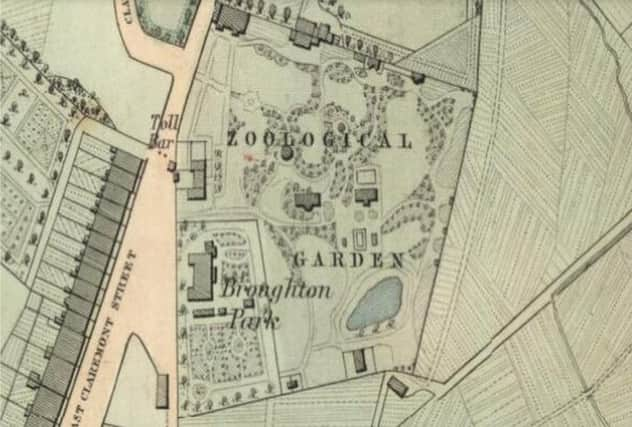Lost Edinburgh: the original Edinburgh Zoo
This article contains affiliate links. We may earn a small commission on items purchased through this article, but that does not affect our editorial judgement.


Edinburgh’s first Royal Zoological Gardens opened to the public in August 1840. They occupied six beautifully-landscaped acres of what was then Broughton Park on East Claremont Street and featured a wide range of exotic animals from around the globe.
Nothing quite like this had been seen in the city before. The 1842 Guide to the Royal Zoological Gardens proclaimed it as a valuable institution of national importance and made note of its extensive and varied collection. The presence of lions, elephants, monkeys, and numerous other exotic species in Auld Reekie attracted praise from all and sundry. One report explained that this encapsulated all that was great about the zoo: the ability to gaze upon legendary beasts in all their living grandeur, something which could otherwise only be visualised through words or from art.
Collection
Advertisement
Hide AdThe zoo’s elephant was a mighty-looking eight-year-old male and visitors were particularly encouraged to admire ‘that exquisite piece of mechanism, its lithe proboscis’.
The bear enclosure was a deep stone-lined pit with a pole in the centre by which Bruin, one of the inhabitants, would ascend to collect titbits offered by visitors.
Whale skeleton
Perhaps the most striking exhibit was an 84ft long whale skeleton which had been found floating in the sea just off the Dunbar coast. Fisherman had dragged it ashore and it was dissected right there on the beach by Dr Robert Knox and several of his assistants… probably rather a lot of assistants.
For a brief period of time the zoo also had a lion. A prized specimen named Wallace who was renowned for his magnificent roar.
Poor conditions
The official guide described the Zoological Gardens as being ‘well adapted to the healthful maintenance of the animals’. However, an independent account of the zoo was reveals that this was far from the truth. It exposed the cramped, wretched conditions and indescribable stench of the enclosures, and claimed that many of the zoo’s inmates were dying as a result. Only the zoo’s polar bears, unaffected by the poor Edinburgh climate and often harsh winters, were said to thrive. Unlike today’s Edinburgh Zoo which is primarily concerned with the preservation of species, the owners of the 1840 zoo seemed intent on placing their collection on the endangered list.
Closure
The animals were eventually so depleted by disease that the zoo faced closure. It tried to stay afloat by putting on large-scale events such as firework displays, summer concerts and pageants but in the end it was to no avail. The zoo shut its gates in 1857 after less than two decades of operation.
Advertisement
Hide AdToday there are no traces left of either the zoo or Broughton Park, the area having been populated with tenements and other residences from around 1880 onwards. However, you can still gauge the length of the park’s perimeter by walking the distance between modern-day West Annandale Street and Melgund Terrace.
Due to the abject failure of the 1840 Royal Zoological Gardens, it would take another 56 years for the city fathers to take such a project seriously again. More than one hundred years on, we appear to have finally got it right.
• Visit Lost Edinburgh on their Facebook page, and follow them on Twitter @lostedinburgh.